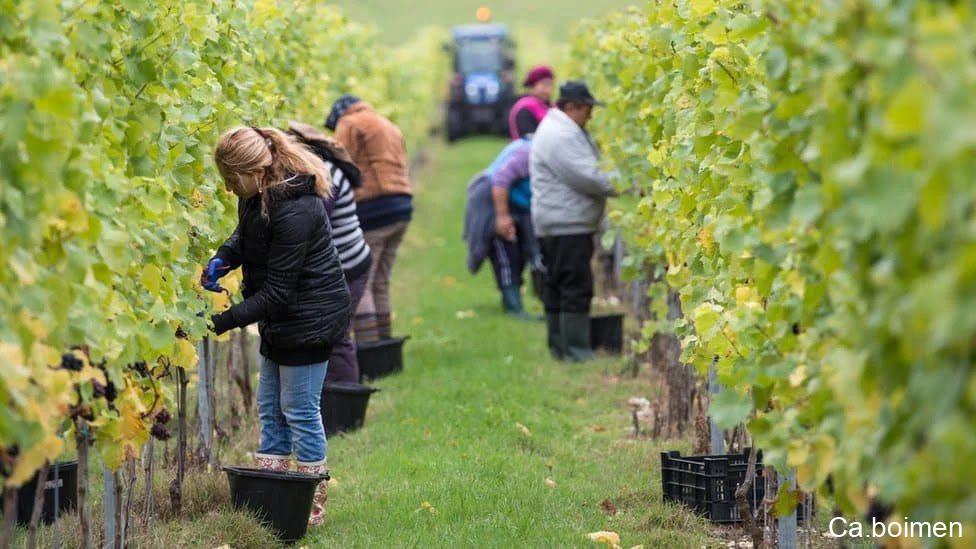Ever dreamed of working outdoors, surrounded by nature, while earning a solid paycheck? Picking fruit or vegetables in Canada might sound like a humble gig, but it’s a golden opportunity for many. The problem? Navigating the ins and outs of this seasonal job market can feel like chasing a ripe apple in a storm! Don’t worry—I’ve been there, and I’m sharing a simple, proven method to help you land a fruit or vegetable picker job in Canada. Based on my experience and insights from others in the field, this guide will show you how to get started, maximize your earnings, and enjoy the ride. Ready to dig in?
Advertisements
Why Choose Fruit or Vegetable Picking in Canada?
Canada’s agriculture industry is booming, with farms from British Columbia to Ontario desperate for seasonal workers. These jobs offer competitive wages—often $15-$20 per hour—flexible schedules, and a chance to work in stunning locations like the Okanagan Valley or Niagara Region. Plus, you don’t need a fancy degree or years of experience. Whether you’re a student, a traveler, or someone looking for a fresh start, picking jobs can be your ticket to financial freedom and adventure.
Advertisements
Here’s how to make it happen with five practical tips that deliver results.
Send in Application
Tip 1: Know Where the Jobs Are
Find the Right Farms and Regions
Canada’s fruit and vegetable picking jobs are concentrated in specific regions. British Columbia leads for berries and tree fruits, Ontario shines for apples and grapes, and Quebec offers opportunities in strawberries and vegetables. Researching high-demand areas is your first step to securing a job.
Advertisements
Why It Matters
Focusing on the right regions saves you time and boosts your chances of landing a gig. Farms in these areas often hire hundreds of workers each season, and many offer on-site housing.
Advertisements
Example
Last summer, I applied to farms in British Columbia’s Okanagan Valley. I used sites like WorkBC and Job Bank Canada to find listings for cherry and peach picking. Within a week, I had two interviews lined up! Targeting a hotspot like the Okanagan made all the difference.
How to Do It
- Check Job Bank Canada (www.jobbank.gc.ca) for seasonal agricultural jobs.
- Search for farms in high-demand areas like Kelowna, Niagara, or Abbotsford.
- Follow farm websites or social media pages for direct hiring updates.
Tip 2: Time Your Application Right
Apply at Peak Hiring Times
Timing is everything in seasonal work. Most farms hire for spring (April-May) and summer (June-September) harvests. Some, like apple orchards, extend into fall (September-October). Applying 2-3 months before the season starts puts you ahead of the pack.
Why It Matters
Early applications show farms you’re serious and give you first pick of the best positions. Many farms also sponsor temporary foreign workers, so getting in early secures your spot.
Example
A friend of mine applied for a blueberry picking job in Abbotsford in March. By May, she was hired, trained, and ready to start, while late applicants scrambled for leftover roles.
How to Do It
- Mark your calendar for January-March to apply for spring/summer jobs.
- Use platforms like Indeed Canada or Agri-Food Canada to track openings.
- Reach out directly to farms via email or phone to stand out.
Tip 3: Get the Right Gear
Invest in Comfortable, Durable Equipment
Picking fruit or vegetables is physical work, so the right gear makes a huge difference. You’ll need sturdy gloves, comfortable boots, a wide-brimmed hat, and weather-resistant clothing. Expect to spend $50-$100 upfront, but it’s worth it.
Why It Matters
Proper gear keeps you safe, comfortable, and productive, helping you work longer and earn more. Plus, farms notice workers who come prepared.
Example
I showed up to my first picking job with cheap sneakers—big mistake! My feet were sore within hours. After investing in quality work boots from Mark’s Work Wearhouse, I could work full days without pain.
How to Do It
- Buy gloves with grip (like Mechanix Wear) for handling wet fruit.
- Get waterproof boots from brands like Columbia or Timberland.
- Pack sunscreen and a reusable water bottle to stay hydrated.
Tip 4: Master the Art of Picking
Learn Efficient Techniques
Picking isn’t just about grabbing fruit—it’s about speed and care. Farms often pay by volume (e.g., $0.50 per pound of berries), so efficiency is key. Watch training videos or ask experienced pickers for tips on handling produce gently to avoid bruising.
Why It Matters
Faster, careful picking means higher earnings and better job security. Farms value workers who balance speed with quality, and you’ll stand out for rehiring next season.
Example
On my first day picking strawberries, I was slow and bruised half the berries. A coworker showed me how to twist and pull gently, doubling my speed by day three. I went from earning $80 a day to $150!
How to Do It
- Watch YouTube tutorials on picking specific crops (e.g., “how to pick blueberries”).
- Practice gentle handling to avoid damaging fruit.
- Set daily goals to increase your speed without sacrificing quality.
Tip 5: Explore Visa and Housing Options
Secure Work Permits and Accommodation
If you’re an international worker, you’ll need a work permit like the Temporary Foreign Worker Program (TFWP) or Seasonal Agricultural Worker Program (SAWP). Many farms offer on-site housing, but you’ll need to confirm details upfront.
Why It Matters
A valid work permit ensures legal employment, and on-site housing cuts commuting costs. Some farms even provide free or low-cost accommodation, saving you hundreds monthly.
Example
A worker I met from Mexico used the SAWP to secure a six-month contract in Ontario. His farm provided bunkhouse accommodation for $50 a week, letting him save most of his $18/hour wage.
How to Do It
- Visit Canada.ca for visa and permit details.
- Ask farms about housing during interviews—many list options on their websites.
- Budget for shared accommodations if off-site ($200-$500/month in rural areas).
Summary: Your Fruit-Picking Checklist
- Research: Target high-demand regions like British Columbia or Ontario.
- Apply Early: Submit applications 2-3 months before the season.
- Gear Up: Invest in quality boots, gloves, and sun protection.
- Learn Techniques: Practice efficient, careful picking to maximize earnings.
- Plan Logistics: Secure work permits and confirm housing options.
FAQ: Your Top Questions Answered
How much can I earn as a fruit or vegetable picker in Canada?
Earnings vary by crop and payment structure. Hourly wages range from $15-$20, while piece-rate pay (e.g., $0.50/pound) can net $100-$200 daily for fast pickers.
Do I need experience to get hired?
No! Most farms train new workers. Showing enthusiasm and reliability is enough to get started.
Can international workers apply for picking jobs?
Yes, through programs like the TFWP or SAWP. Check Canada.ca for eligibility and application steps.
What’s the best province for fruit-picking jobs?
British Columbia (Okanagan Valley) and Ontario (Niagara Region) are top spots due to high demand and variety of crops.
Let’s Wrap It Up!
Landing a fruit or vegetable picker job in Canada is easier than you think! With the right timing, gear, and techniques, you can earn $15-$20 per hour, work in beautiful settings, and even secure housing. Follow these five tips—research hotspots, apply early, gear up, master picking, and sort out permits—and you’ll be harvesting success in no time. Got your own tips or questions? Share them below or on social media—I’d love to hear your story! Start planning today, and you could be picking apples in Niagara or berries in Kelowna by next season!







